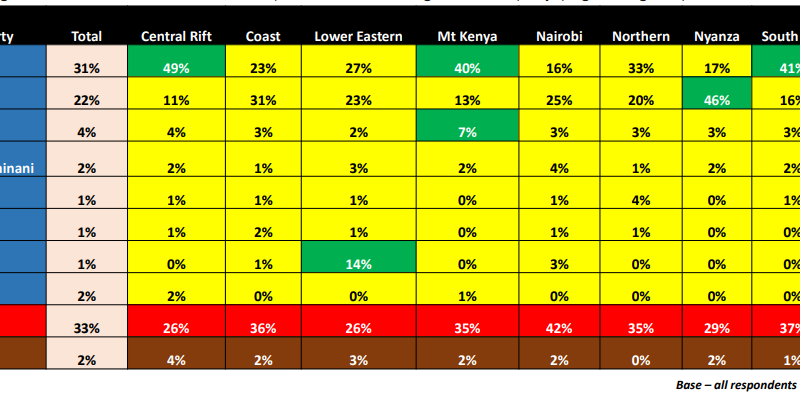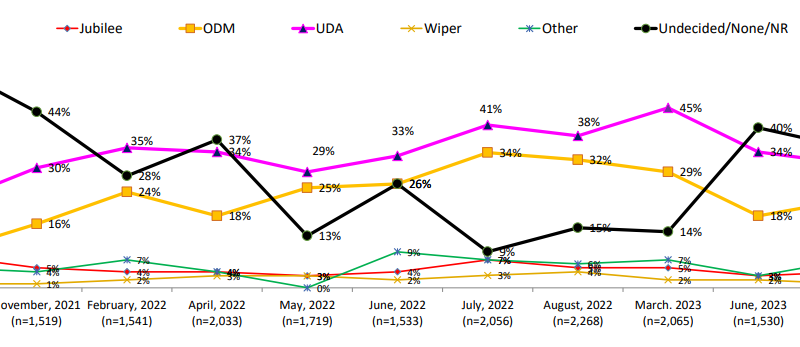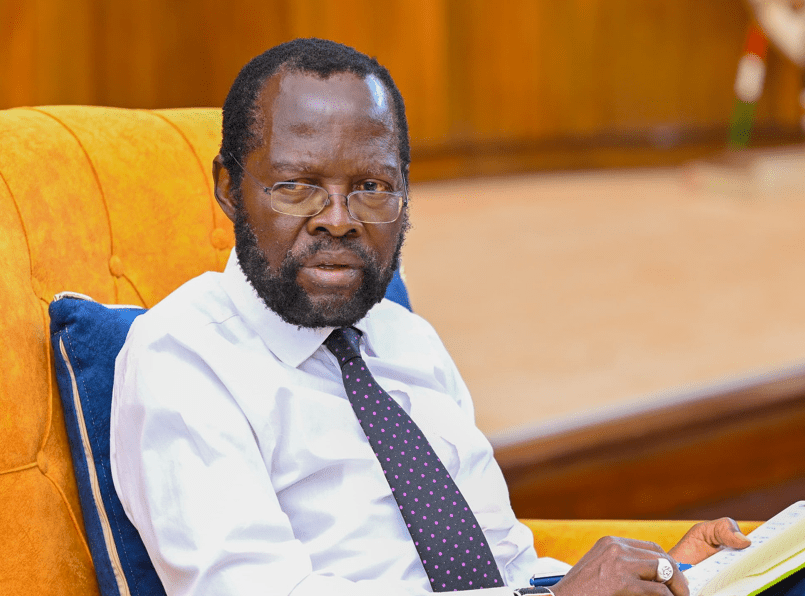UDA ranked most popular party in Kenya – TIFA poll

The United Democratic Alliance (UDA) has been ranked as the most popular political party in the latest TIFA poll.
According to the poll, UDA garnered 31 per cent support from Kenyans as compared to its arch-rival, the Orange Democratic Movement (ODM) party, whose popularity was rated at 22 per cent.
Out of nine regions, UDA is most popular in five regions including Central Rift (49 per cent), Mt Kenya (40 per cent), South Rift (41 per cent), Lower Eastern (27 per cent) and Northern Kenya (33 per cent).
ODM is the most popular party in the Coastal region (31 per cent), Nairobi (25 per cent), Nyanza (46 per cent) and Western (28 per cent).
Jubilee was ranked the third-most popular party in Kenya at four per cent followed by Chama cha Mashinani at two per cent.
KANU, Ford Kenya and Wiper Democratic Movement have one per cent support each from Kenyans, while other parties have two per cent support from Kenyans.
33 per cent of Kenyans polled by TIFA do not support any political party while two per cent did not offer any response.

“Across the country, UDA is strongest in Central Rift, South Rift and Mt. Kenya. Further, the support for most of the minor parties is even more concentrated: Jubilee, FORD-K and Wiper all at 1% nationally but having 7% in Mt Kenya, 8% in Western, and 14% in Lower Eastern, respectively. Also of note is that those who decline to express support for any party now constitute a plurality (33%), indicating a continuing decline in the confidence that the political class writ large is currently enjoying among Kenyans,” TIFA noted.
TIFA notes that over the last two and a half years, there have been several major shifts in the distribution of political party support the most notable being the rise of UDA.
“Over the last two and a half years there have been several major shifts in the distribution of political party support, the most notable being the rise of UDA and the erratic rise and fall of those either undecided or declining to identify with any party. However, most recently – since June – it is the slight narrowing of the gap between UDA and ODM (from 16% to 9%), evidently a consequence of the increasing despondency among many Kenyans about the rising cost-of-living,” TIFA added.

58 per cent of Kenyans currently lack a conviction that there is any political party that “honestly or genuinely” has the interests of people at heart.
“Such a negative view is slightly more prominent among supporters of the Kenya Kwanza government than among those of the Azimio Opposition (54% vs. 51%) but is (quite logically) considerably higher among those who support neither coalition (67%). What any/all parties would have to do to raise the confidence of at least their supporters in this regard is an open question,” the report added.
Due to a lack of confidence in political parties, TIFA concludes that there could be room for new political actors, even if the next elections are more than three years away.













